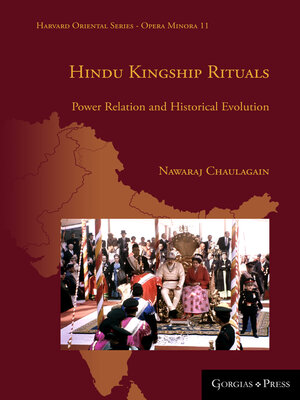
Sign up to save your library
With an OverDrive account, you can save your favorite libraries for at-a-glance information about availability. Find out more about OverDrive accounts.
Find this title in Libby, the library reading app by OverDrive.



Search for a digital library with this title
Title found at these libraries:
| Loading... |
In recent decades, Nepal has witnessed a dramatic shift from its ancient form of Hindu kingship to a federal republican democratic secular order, with the official dissolution of monarchy in 2008. This study deals with the religious lives of the Śāh kings of Nepal, concentrating on such major rituals as the "coronation" (rājyābhiṣeka) and the autumnal navarātri (Goddess-centered) festival. These are described in Hindu religious literature and in ritual handbooks and were practiced in the royal palaces of the ancient capital of Gorkhā and of Hanumānḍhokā (Kathmandu). The rituals are based on the sacred myths related to divine enthronement and the mythological victory of good over evil, but they were slanted primarily to the production of religious and socio-political sovereign power. The book argues that the Vedic, Tantric and other devotional activities empowered the king and constructed his personal and corporate identity. Such rituals were strongly political because, through them, various divine and human agencies invested the king with multiple powers and authorized him to rule by negotiating their own relations, domains of influence, and hierarchies. The book discusses how these rituals produced a sacred and divine king, sacred kingship and sacred space by establishing the king's connection (bandhu) and identification with many sources of power. They jointly created, perpetuated, and strengthened his power. Myths and rituals were used strategically and ideologically to legitimize the status of the king and enforce the use of power on others. Drawing on many examples from Nepalese history, this monograph also examines how myth and ritual were sites for dialogue, negotiation, resistance, subversion, and replacement of power. This study unravels how religion and politics were deeply intertwined in the ritual activities, and how the rituals, in their traditional deeply religious and devotional settings, exerted a maximum of socio-political powers for the king and his institutions.






